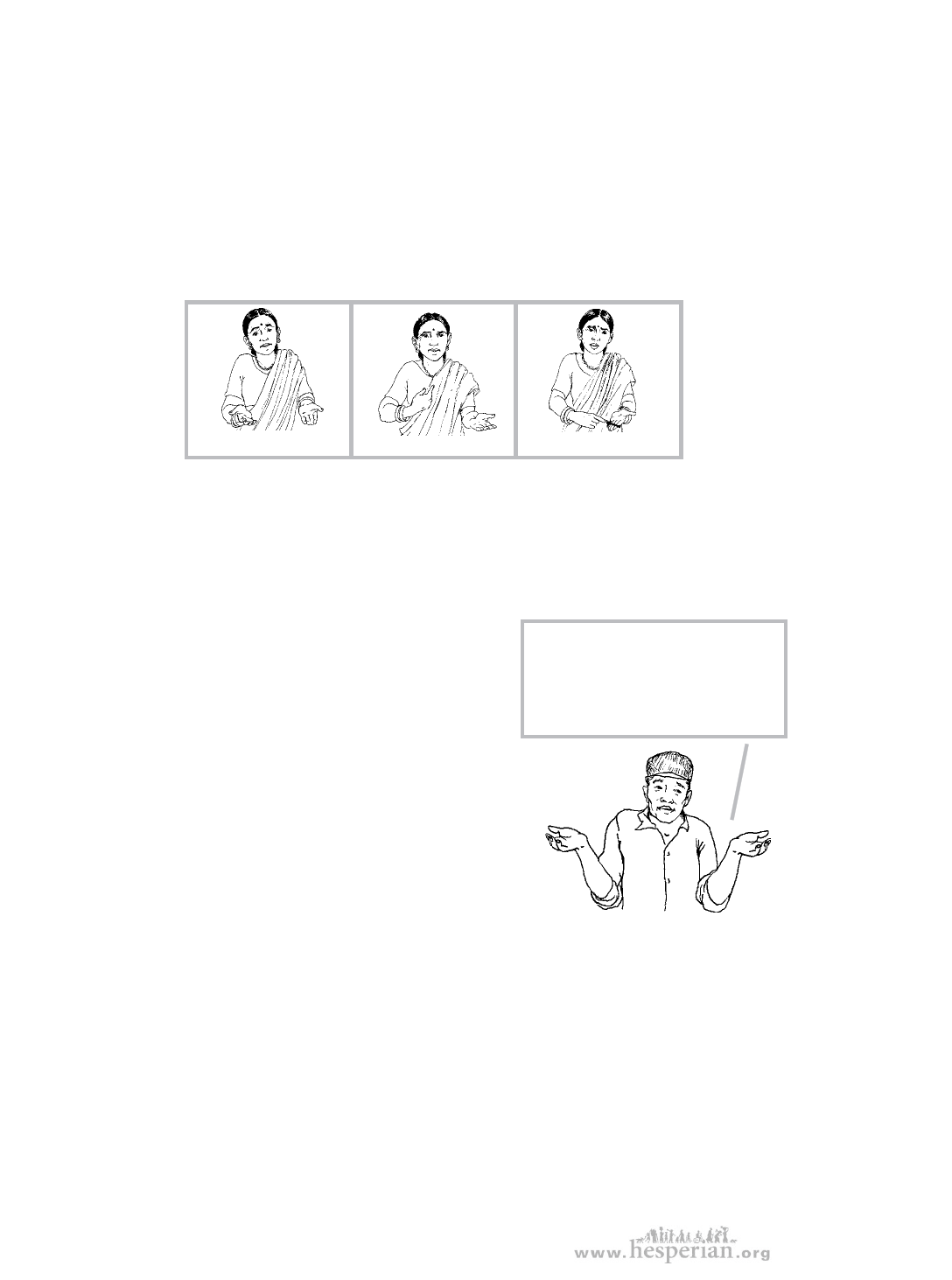
104 learning to use a sign language
Tips for adults learning sign language
Sign language depends a lot on the way you express things through
the whole body. The way you stand, and expressions on your face all
communicate as much as your hands.
See how Nimi’s expression changes as she asks the question, “What
should we do?” in sign language.
what
we
do
Deaf people watch the face of the person they are communicating with
— not only that person’s hands — just as hearing people look at each
other’s faces as they listen.
• Act out what you want to say. Do not worry about making mistakes
or looking foolish.
• Use anything and everything that
Minh and I sometimes make
helps to communicate: gestures,
expressions on the face, body
movements, pointing, signing, and
finger spelling (spelling out words
each other laugh trying to
act out a sign we do not
know. But the more we sign,
the more we learn!
by using signs for each letter). Try
communicating an idea or simple sentence
with no formal signs at all. Just use
gestures, facial expression, and pointing.
Even when you do not know or forget a
formal sign, you can still communicate
with deaf people this way.
• Each person learns language in a different way
and at a different pace. Learn as much as you can. Do not worry
about what others have or have not learned. The goal is to help your
child, not to compete with others.
• To really learn sign language, use it often with deaf people
who sign.
Learning sign language will not be easy. But remember, it is important
to your child to have a common language that all of you can share.
Keep practicing sign language. If you do not use it, you lose it — just like
any other language you learn.
Helping Children Who Are Deaf (2004)